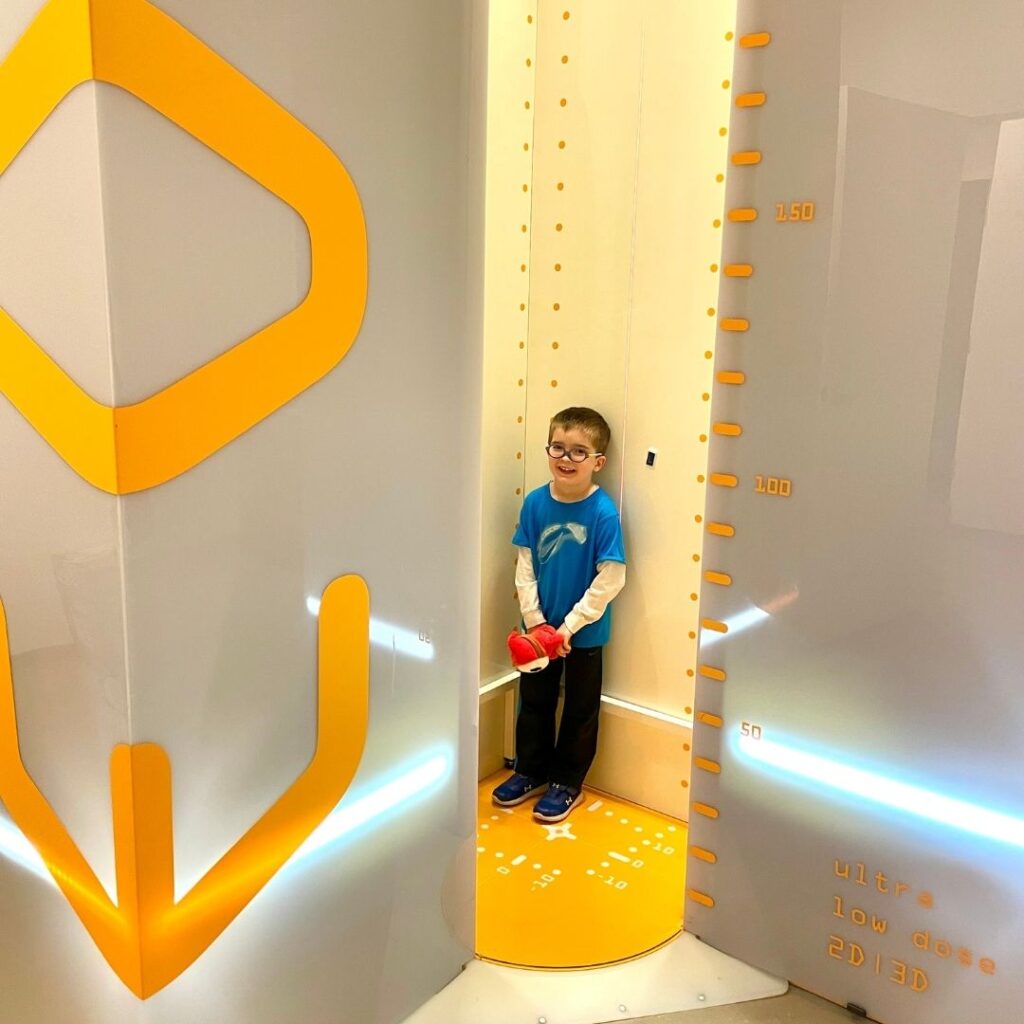The benefit of X-ray imaging to properly diagnose and monitor scoliosis curves is invaluable. In general, scoliosis patients need two X-ray sessions per year; plus, each time a new brace is required, new X-rays are necessary. Since patients are often diagnosed in early adolescence, when their bodies are still growing, there is value in finding ways to minimize the radiation exposure. At National Scoliosis Center we utilize an EOS Low Dose X-Ray Imaging System for our patients. EOS X-rays produce high-quality detailed images and expose patients to significantly lower doses of radiation than traditional X-rays.
“An EOS imaging system is important for kids with scoliosis because the radiation dose is about 1/7th of a normal X-ray dose at the initial visit and much lower still for follow-up X-rays using the microdose setting,” says Dr. Laurel Blakemore, CEO of Pediatric Specialists of Northern Virginia. “That is not so important if you only get two scoliosis X-rays in your life. But if you get 20 or 30, as may be needed for a child diagnosed with scoliosis when they’re two or three years old, that’s a lot of X-rays. Being able to use the lowest X-ray dose possible is really important for those children and EOS imaging makes that possible for us,” continues Dr. Blakemore.
The EOS imaging system also decreases the duration of the X-ray session as it allows doctors to see the entire body – both front and side views – with one scan. A “full-body” scan can be created in less than 20 seconds. This avoids the need for multiple images to be taken and then pieced (or stitched) together. “This gives us a more accurate view of the spine, which is essential for proper treatment.,” says Kristian Christensen, Certified Orthotist here at National Scoliosis Center.
Another benefit of the EOS imaging system is a more comfortable experience for the patient. During an EOS X-ray, the patient stands or sits upright as the X-ray beams scan the spine. There is less of a need for numerous position changes to get different views of the musculoskeletal system with this type of X-ray (Hospital for Special Surgery, 2021).
Weighing the risks and benefits of the various components of scoliosis treatment can be confusing and overwhelming. While consistent monitoring of spinal curves through X-ray imaging is imperative for successful treatment, technologists understand the hesitancy patients might feel at frequent exposure. Parents can rest assured that National Scoliosis Center offers state-of-the-art technology. The EOS Low Dose Imaging System is one of the safest ways to adequately track your child’s spinal progress while limiting the risks of radiation.
